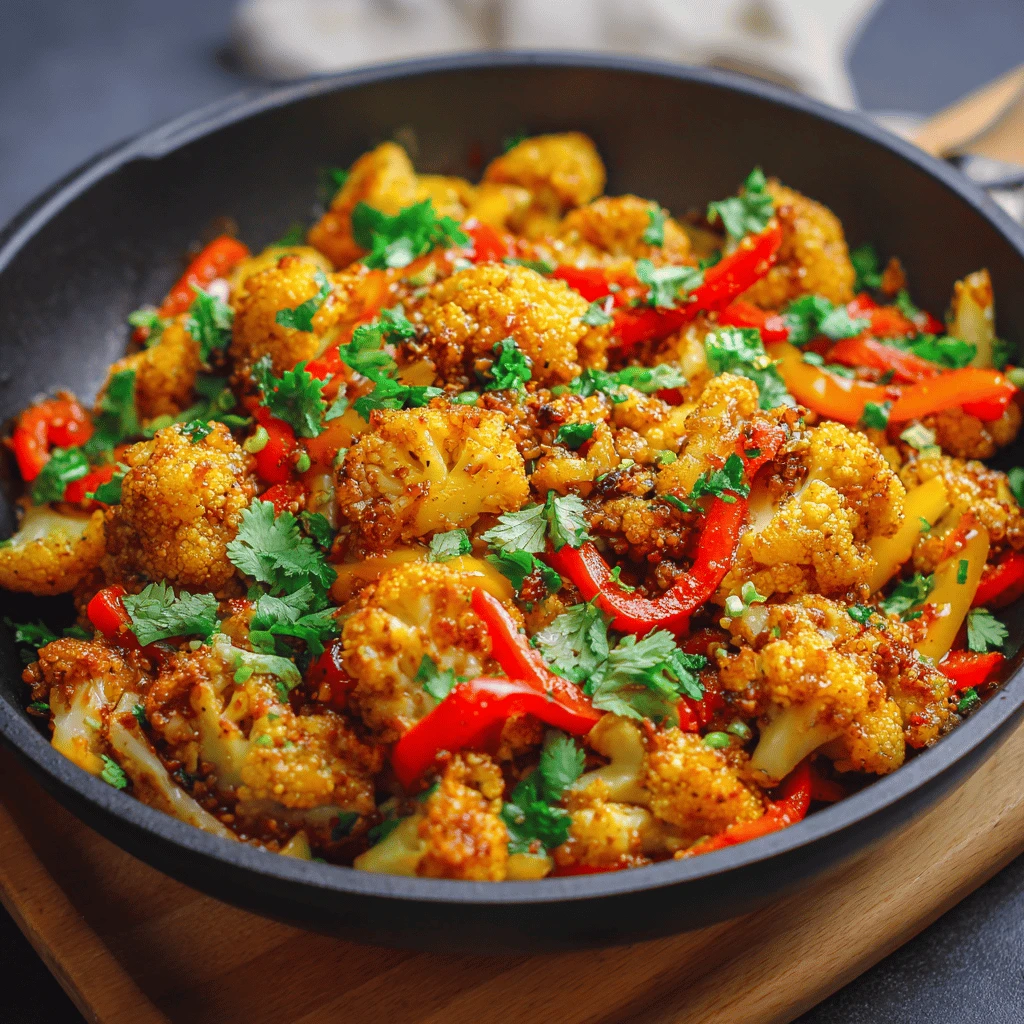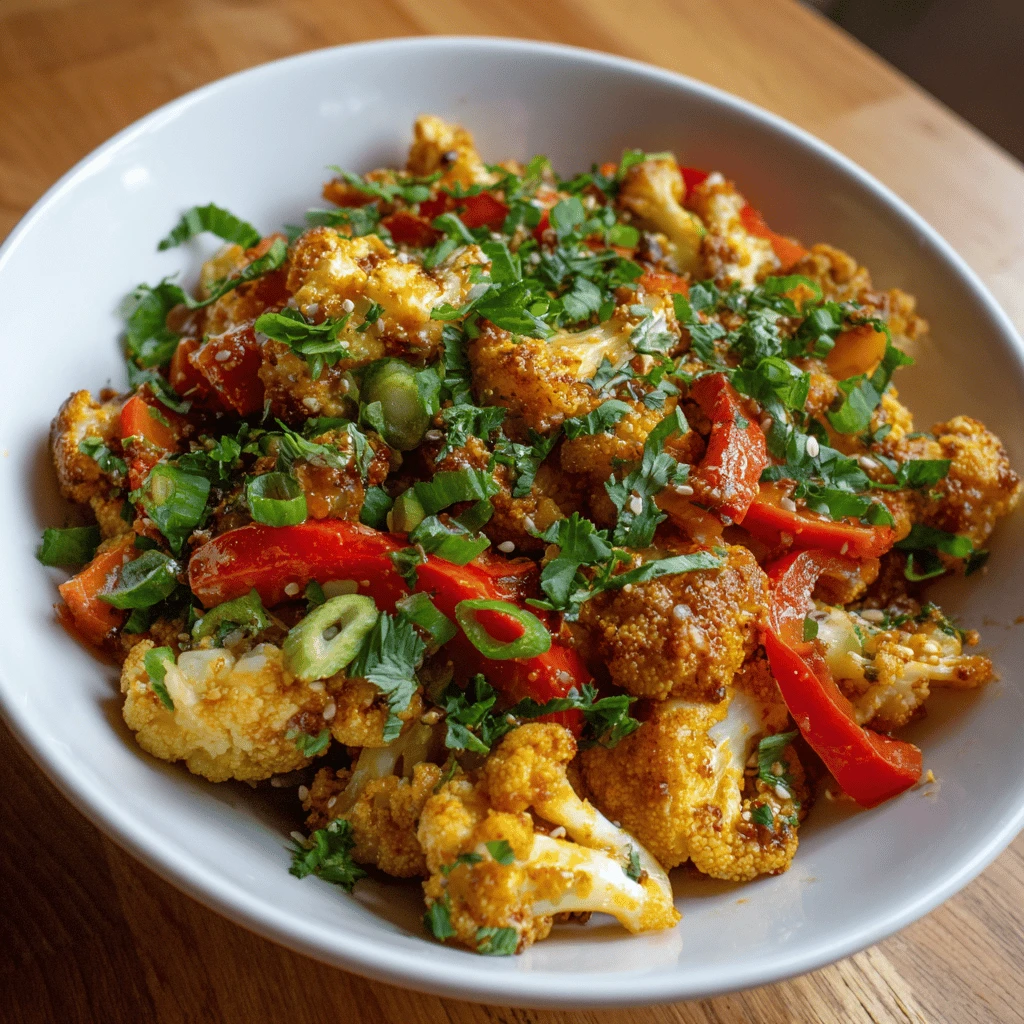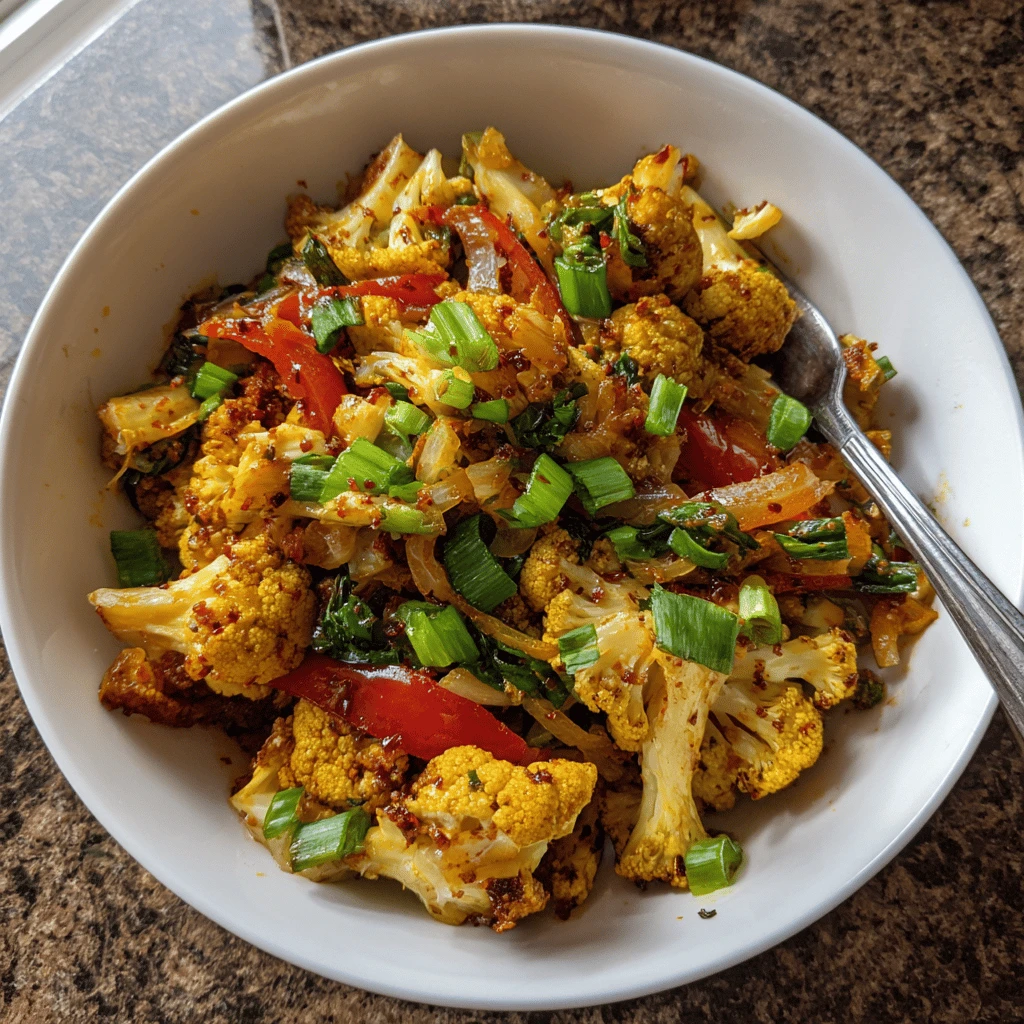High Protein Low Carb Cauliflower Stir Fry: A Delicious and Healthy Meal
Cauliflower stir fry is a fantastic way to enjoy a flavorful and nutritious meal while keeping your carbohydrate intake low and your protein intake high. This versatile dish is easily customizable to suit your preferences and dietary needs, making it a perfect choice for those following a ketogenic, low-carb, or simply health-conscious lifestyle. This article will guide you through creating the perfect high-protein, low-carb cauliflower stir fry, offering recipe ideas, tips, and variations to inspire your culinary creativity.
Why Cauliflower Stir Fry is a Great Choice
Cauliflower is a nutritional powerhouse, packed with vitamins, minerals, and fiber while being low in calories and carbohydrates. It’s an excellent alternative to rice or noodles in stir-fries, providing a satisfying texture and absorbing flavors beautifully.
Health Benefits of Cauliflower
Cauliflower is rich in vitamin C, vitamin K, folate, and choline. These nutrients contribute to immune function, bone health, and brain development. The fiber content promotes digestive health and helps you feel full and satisfied. Furthermore, cauliflower contains antioxidants that protect against cell damage and reduce the risk of chronic diseases.
Low Carb and Keto-Friendly
For those following a low-carb or ketogenic diet, cauliflower is a staple ingredient. A one-cup serving of cauliflower contains only about 5 grams of carbohydrates, making it a guilt-free way to enjoy a hearty meal. Using cauliflower in place of rice or noodles significantly reduces the carbohydrate content of your stir fry.
Versatile and Customizable
The beauty of cauliflower stir fry lies in its versatility. You can easily adapt the recipe to your taste preferences by adding different vegetables, protein sources, and sauces. Whether you prefer a spicy Szechuan-inspired dish or a savory garlic ginger creation, cauliflower provides the perfect canvas for your culinary experiments.
Building Your High-Protein, Low-Carb Cauliflower Stir Fry
Creating a delicious and satisfying cauliflower stir fry involves selecting the right ingredients and using proper cooking techniques. Here’s a step-by-step guide to help you build the perfect meal.
Choosing Your Cauliflower
You can use fresh or frozen cauliflower for your stir fry. Fresh cauliflower offers the best texture and flavor, but frozen cauliflower is a convenient option for busy weeknights.
- Fresh Cauliflower: Look for a head of cauliflower that is firm, compact, and free from blemishes. The florets should be tightly closed and creamy white in color.
- Frozen Cauliflower: Ensure that the frozen cauliflower is free from freezer burn and ice crystals. Thaw it slightly before using it to remove excess moisture.
Selecting Your Protein Source
Adding a protein source is essential for making your cauliflower stir fry a complete and satisfying meal. Several options work well, each offering unique flavors and textures.
- Chicken: Cubed chicken breast or thigh is a popular choice. Marinate the chicken before stir-frying for added flavor and tenderness.
- Beef: Thinly sliced beef sirloin or flank steak adds a rich and savory element. Brown the beef quickly over high heat to prevent it from becoming tough.
- Shrimp: Shrimp cooks quickly and adds a delicate seafood flavor. Use peeled and deveined shrimp for convenience.
- Tofu: For a vegetarian option, use firm or extra-firm tofu. Press the tofu to remove excess moisture before cubing and stir-frying.
- Eggs: Scrambled or fried eggs can be added to the stir fry for a boost of protein and a creamy texture.
Adding Vegetables
In addition to cauliflower, you can add a variety of other vegetables to your stir fry to enhance its flavor, texture, and nutritional value.
- Bell Peppers: Sliced bell peppers add color and sweetness.
- Broccoli: Broccoli florets provide a similar texture to cauliflower and add extra nutrients.
- Onions: Sliced onions add a savory base flavor.
- Garlic: Minced garlic adds a pungent and aromatic element.
- Ginger: Grated ginger adds a warm and spicy note.
- Mushrooms: Sliced mushrooms add an earthy and umami flavor.
- Snap Peas: Snap peas provide a crisp and sweet element.
- Spinach or Bok Choy: Leafy greens add vitamins and minerals.
Crafting the Perfect Sauce
The sauce is what ties all the ingredients together and gives your cauliflower stir fry its distinctive flavor. Opt for low-carb options to maintain the dish’s health benefits.
- Soy Sauce or Tamari: Use low-sodium soy sauce or tamari for a salty and umami flavor.
- Coconut Aminos: Coconut aminos are a gluten-free and soy-free alternative to soy sauce with a slightly sweeter taste.
- Sesame Oil: A drizzle of sesame oil adds a nutty and aromatic flavor.
- Rice Vinegar: Rice vinegar adds a tangy and acidic element.
- Chili Garlic Sauce: Chili garlic sauce adds heat and flavor.
- Ginger and Garlic: Freshly grated ginger and minced garlic create a flavorful base.
- Xanthan Gum: A small amount of xanthan gum can be used to thicken the sauce.
- Erythritol or Monk Fruit: Use a low-carb sweetener like erythritol or monk fruit to balance the flavors.
Step-by-Step Cauliflower Stir Fry Recipe
Now, let’s put it all together with a simple and delicious recipe for high-protein, low-carb cauliflower stir fry.
Ingredients:
- 1 head of cauliflower, cut into florets
- 1 pound of chicken breast, cubed
- 1 bell pepper, sliced
- 1 onion, sliced
- 2 cloves garlic, minced
- 1 inch ginger, grated
- 2 tablespoons soy sauce (low sodium) or coconut aminos
- 1 tablespoon sesame oil
- 1 tablespoon rice vinegar
- 1 teaspoon chili garlic sauce (optional)
- Salt and pepper to taste
- 2 tablespoons olive oil or coconut oil
Instructions:
1. Prepare the Cauliflower: If using fresh cauliflower, wash and cut it into small florets. If using frozen cauliflower, thaw it slightly and pat it dry.
2. Marinate the Chicken: In a bowl, combine the cubed chicken breast with 1 tablespoon of soy sauce (or coconut aminos), 1 teaspoon of sesame oil, and a pinch of salt and pepper. Let it marinate for at least 15 minutes.
3. Stir-Fry the Chicken: Heat 1 tablespoon of olive oil or coconut oil in a large skillet or wok over medium-high heat. Add the marinated chicken and cook until it is browned and cooked through, about 5-7 minutes. Remove the chicken from the skillet and set aside.
4. Stir-Fry the Vegetables: Add the remaining 1 tablespoon of olive oil or coconut oil to the skillet. Add the sliced onion and cook until it is softened, about 3-5 minutes. Add the minced garlic and grated ginger and cook for another minute until fragrant.
5. Add the Cauliflower and Bell Pepper: Add the cauliflower florets and sliced bell pepper to the skillet. Stir-fry for about 8-10 minutes, or until the cauliflower is tender-crisp.
6. Add the Sauce: In a small bowl, whisk together the remaining 1 tablespoon of soy sauce (or coconut aminos), rice vinegar, and chili garlic sauce (if using). Pour the sauce over the vegetables and stir to combine.
7. Combine and Serve: Return the cooked chicken to the skillet. Stir everything together and cook for another 1-2 minutes, allowing the flavors to meld. Season with salt and pepper to taste.
8. Garnish (Optional): Sprinkle with sesame seeds, chopped green onions, or red pepper flakes for added flavor and visual appeal.
9. Serve: Serve the cauliflower stir fry hot. Enjoy it as a main course or as a side dish.
Tips and Variations for Cauliflower Stir Fry
Experiment with different ingredients and techniques to create your own unique cauliflower stir fry.
Roasting the Cauliflower
For a different texture and flavor, try roasting the cauliflower before adding it to the stir fry. Toss the cauliflower florets with olive oil, salt, and pepper, and roast them in a 400°F (200°C) oven for about 20-25 minutes, or until they are tender and slightly browned.
Cauliflower Rice
Instead of using cauliflower florets, you can use cauliflower rice for a different texture. Simply pulse the cauliflower florets in a food processor until they are finely chopped, resembling rice. Add the cauliflower rice to the stir fry during the last few minutes of cooking time, as it cooks quickly.
Adding Nuts and Seeds
Add toasted nuts or seeds for extra crunch and nutrients. Almonds, cashews, peanuts, sesame seeds, and sunflower seeds all work well.
Spicy Variations
For a spicy kick, add more chili garlic sauce, red pepper flakes, or a dash of hot sauce to the stir fry. You can also use spicy peppers like jalapenos or serranos.
Sweet and Savory Variations
Balance the savory flavors with a touch of sweetness. Add a small amount of erythritol, monk fruit, or a drizzle of honey (if not strictly low-carb) to the sauce. You can also add pineapple chunks or other sweet vegetables like carrots.
FAQs About High Protein Low Carb Cauliflower Stir Fry
Here are some frequently asked questions about making and enjoying high-protein, low-carb cauliflower stir fry.
Q: Can I make cauliflower stir fry ahead of time?
A: Yes, you can prepare the cauliflower stir fry ahead of time, but keep in mind that the texture of the cauliflower may soften slightly as it sits. Store it in an airtight container in the refrigerator for up to 3-4 days. Reheat it in a skillet or microwave before serving.
Q: How do I prevent my cauliflower stir fry from becoming soggy?
A: To prevent your cauliflower stir fry from becoming soggy, make sure to remove any excess moisture from the cauliflower before cooking it. Pat the cauliflower florets dry with paper towels, or roast them in the oven to remove moisture. Avoid overcrowding the skillet, as this can steam the vegetables instead of stir-frying them.
Q: What other vegetables can I add to cauliflower stir fry?
A: You can add a variety of other vegetables to your cauliflower stir fry, such as broccoli, carrots, celery, zucchini, and green beans. Choose vegetables that are low in carbohydrates and complement the flavors of the other ingredients.
Q: Is cauliflower stir fry suitable for a vegan diet?
A: Yes, cauliflower stir fry can be easily adapted for a vegan diet by using tofu or tempeh as the protein source and using vegetable broth or water instead of chicken broth in the sauce.
Q: What are some good low-carb sauce options for cauliflower stir fry?
A: Good low-carb sauce options include soy sauce, coconut aminos, sesame oil, rice vinegar, and chili garlic sauce. You can also make your own low-carb sauce using these ingredients and adding a thickener like xanthan gum.




